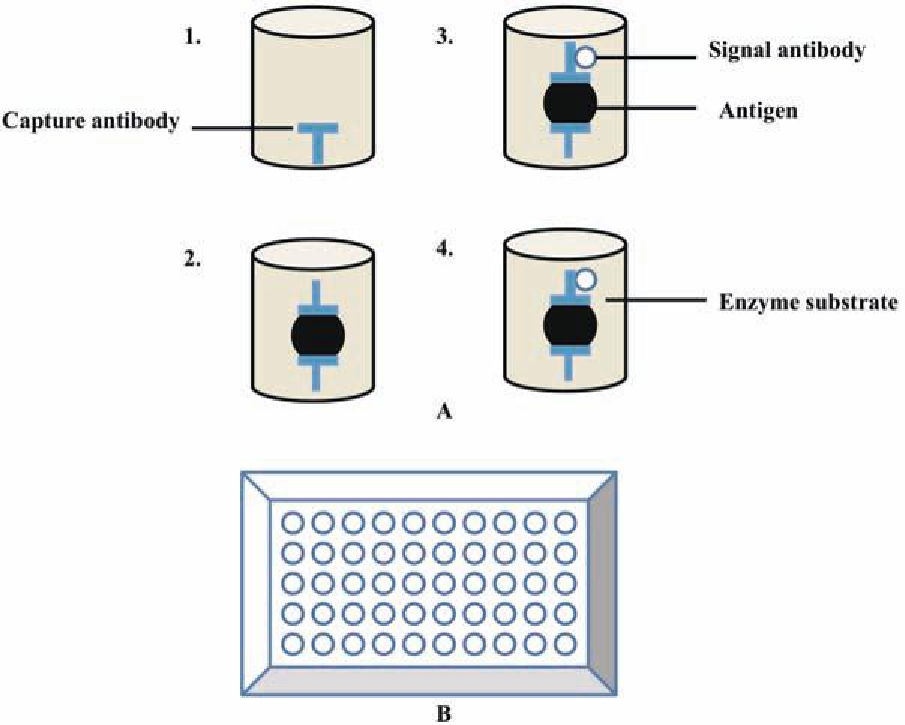Agriculture Reference
In-Depth Information
injected with the pathogen. It contains a mixture of antibodies that, if carefully screened for cross-reactivity,
can be quite speciic for the target pathogen. However, once the batch runs out, it can only be replenished
by inoculating another animal with the pathogen and the next batch of antisera may differ in speciicity.
Monoclonal antibody technology overcomes this problem by production of antibodies from spleen cells
that have been hybridized with human cancer cells. These cell lines can be stored indeinitely and will pro-
duce exactly the same antibodies when cultured.
Figure 10.17. A: Schematic diagram of the double-sandwich ELISA procedure. B: Schematic diagram of
wells on an ELISA plate.
dnA TECHnIQuES
DNA Hybridization.
DNA hybridization assays use a DNA probe, which is complementary to a section
of DNA in the genome that is unique to the target plant pathogen. The procedure requires that the whole
DNA genome be extracted from the target pathogen (Fig. 10.18). The probe is labeled with an isotope or a
chemical and applied to the DNA extract on a membrane. It then hybridizes with the complementary DNA.
Hybridized DNA is then detected by autoradiography when an isotope is used as the label and by staining
reagents for chemical labels. The technique has been used to detect downy mildew pathogens in corn seed
(Yao et al., 1991) and one of the bean bacterial blight pathogens
, Pseudomonas phaseolicola
(Schaad et al.,
1989).

